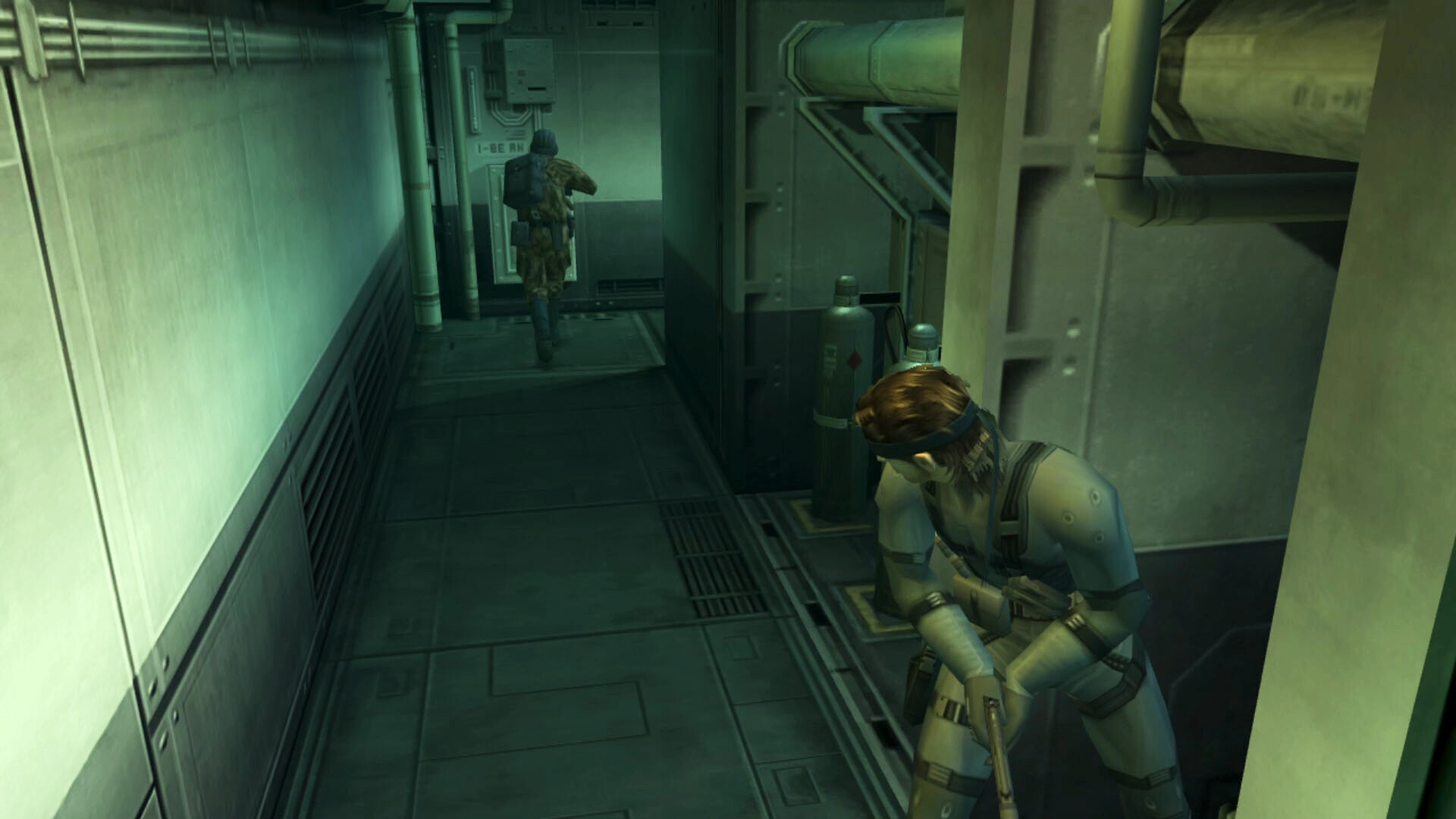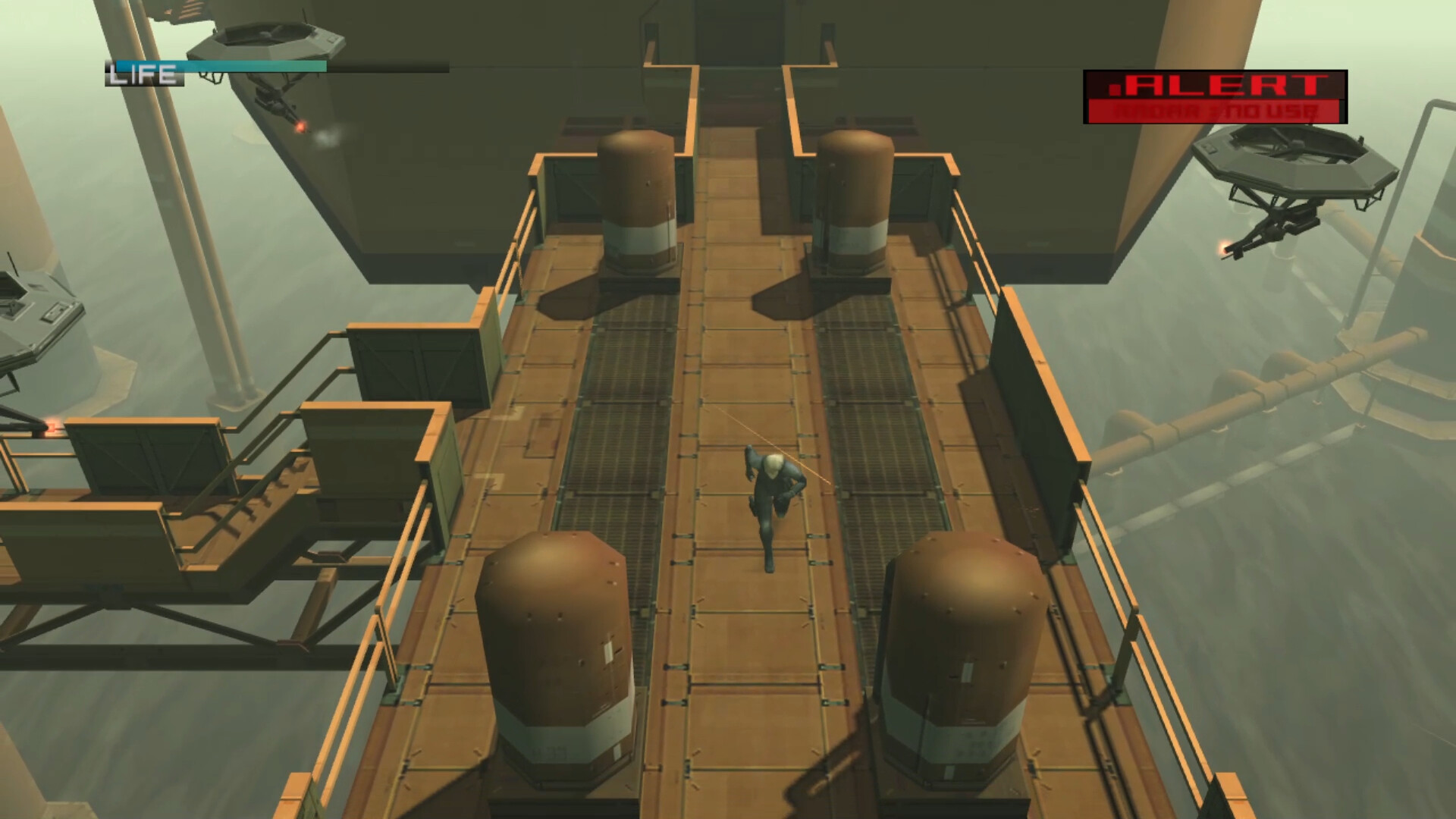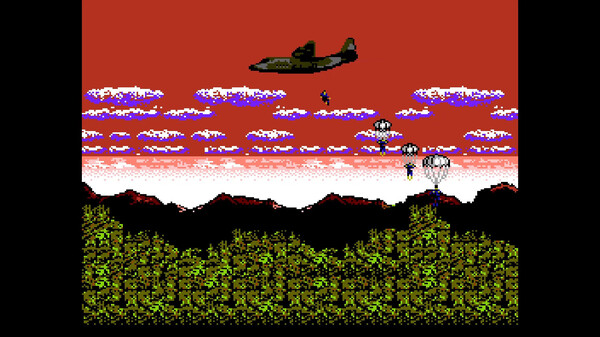
No matter what Konami does with the Metal Gear franchise moving forward, there will never be any escape from Hideo Kojima’s influence. The man not only created one of the most beloved video game franchises of all time but also helped establish stealth gameplay as we know it.
He smartly incorporated fast-paced, arcade-like sensibilities with macro attention to detail, making the Metal Gear games feel bigger than they were. Kojima has left Konami and struck out on his own with Death Stranding, leaving his baby in the hands of Konami.
Metal Gear Solid V, has tried to scrape what they can to keep the franchise relevant with Metal Gear Survive. It didn’t work and the series has gradually shifted towards obscurity since. Since the announcement of a remake of Snake Eater, Konami has gone back to the well and assembled a new compilation of Hideo Kojima’s Metal Gear games up to 2005.
Metal Gear Solid: Master Collection Vol. 1 may be one of the most substantial compilations of games since Rare Replay. How do these conversions hold up? Which games are the most enjoyable and what kind of extras can fans and newcomers expect?
Metal Gear Solid: Master Collection Vol. 1
Developer: Konami, KCEJ, Kojima Productions, Bluepoint Games, Virtuous
Publisher: Konami
Platforms: Windows PC, PlayStation 4, PlayStation 5, Nintendo Switch, Xbox SeriesX|S (reviewed)
Release Date: October 24, 2023
Price: $59.99 USD

The story in Metal Gear Solid: Master Collection Vol. 1 weaves an epic saga that spans decades of cyberpunk political intrigue, arthouse existential drama, Hollywood-style action movie heroics… and a touch of mecha anime influences. Sometimes it veers off into pure horror too.
The stories in these games usually revolve around a stealth operation where one man is sent on a suicide mission. Things are always never as they seem; there are double crosses, sometimes triple crosses, and each story climaxes with a battle with a large mech.
Metal Gear Solid features an operative codenamed Solid Snake, and his rescue mission turns out to be much more personal than he realized. Kojima’s Hollywood-style storytelling was refined even in 1998; the sense of cinematography is mesmerizing, despite the low polycount and pixelated textures. The performances and music create a palpable atmosphere.

It is too bad that Metal Gear Solid: Master Collection Vol. 1 chooses to only have Metal Gear Solid to represent the first entry in the ‘Solid’ games. Its remake, The Twin Snakes is not only the better game but probably would have emulated better.
There is no way around it; Metal Gear Solid: Master Collection Vol. 1 is an unabashedly lazy collection. Konami did the bare minimum when it comes to a Metal Gear compilation.
Credit must be given for making this a very substantial collection of games; eight in total, but there was almost no work done or anything new for fans who already have the HD Collection that came out in 2011 on PlayStation 3 and Xbox 360.
Included in the Master Collection, is the original PlayStation version of Metal Gear Solid from 1998 and VR Missions expansion from 1999.
This is easily the shoddiest and laziest inclusion, as it’s running on subpar emulation that has noticeable sound issues while using menus. Worse yet, there is also input latency. The analog movement is gone; Snake only moves in eight directions instead of the smooth 360 degrees.

There is also some censorship in this new release. Johnny is no longer naked after Meryl mugs his uniform. There may be more instances but without a direct comparison, an analysis could take weeks or months because Kojima’s games are packed with granular detail.
Other noticeable changes are instances of stock footage being replaced by several scenes in all of the titles. This was an understandable alteration due an issues with copyrights. The footage was shots of scientists in labs being replaced with other shots of scientists in labs or alternate footage of rockets or war footage.
Metal Gear Solid was cutting edge in 1998, but most gamers would see it as quaint today. It isn’t that much more complex than the four retro games included in this collection. Snake’s radar is almost too helpful by showing players too much information, but it was necessary since the POV is overhead and gives limited visibility of what’s ahead.

Avoiding sightlines and not making noise while using the environment to your advantage is basic in the first Metal Gear Solid, but still satisfying. Metal Gear Solid 2: Sons of Liberty would further expand on the gameplay and take it to its fullest extent by expanding the number of actions and ways the player can interact with guards and the environment.
Sons of Liberty might be gaming’s first ‘post-modern’ game and is the most clever subversion of expectations ever executed. The story is deliberately similar to the previous entry and explores meta-commentary on what a sequel could be. In a way, the fact that Sons of Liberty is a continuation of Metal Gear Solid is almost incidental. Its themes are big and the story is frightfully prophetic.

Sons of Liberty is easily one of the franchise’s high points in terms of its story and perfecting classic Metal Gear gameplay. Since this is based on the Substance HD version, gamers will be floored by the expansive 300 VR missions that take the mechanics to their absolute limit.
Metal Gear Solid 3: Snake Eater takes the series in a totally new direction; the past. Set in the 1960s, players assumed the role of Naked Snake, the operative who would become Big Boss. Before he was holding the world hostage, he was just a grunt who was sent on a mission to assassinate his former mentor for defecting to the Soviet Union.
As the story unfolds, Snake Eater proves to be more about loyalty, the loss of innocence, knowing yourself, and the cycle of violence. All three mainline ‘Solid‘ games are beautifully intricate, but Snake Eater‘s story is the most emotional and personal of the bunch.

Snake Eater‘s gameplay mixes things up by introducing a 360-degree controllable camera and shifting from geometric rooms with walls and corridors to an organic Russian jungle. Managing Snake’s camo index to achieve nigh invisibility, tending to wounds, and staying fed to keep stamina up makes this entry into a full-on surivival game.
The mechanics around the camo, eating, and first-aid aren’t executed with the best finesse since it’s all done through menus. This is where the 3DS version managed to outclass the HD Snake Eater because the extra screen made the actions fast and instant.
Sadly, the crouch-walk from the 3DS version of Snake Eater was also not included in the Master Collection edition. There are still several omissions that are still unaccounted for. Sons of Liberty is still missing skateboarding and The Document of Metal Gear Solid 2 is also not included.

Understandably, Snake vs Monkey would be cut due to it being an advertisement for a Sony game, but there was no excuse for losing Secret Theater and the Guy Savage nightmare minigame in Snake Eater. Metal Gear Online is also once again unaccounted for.
Metal Gear Solid: Master Collection Vol. 1′s biggest headliners are Sons of Liberty and Snake Eater, but they are the same iterations from the HD Collection. For the most part, barring some missing effects, Bluepoint’s HD remaster of 2 and 3 is a good way to play these classics.
The only real differences are the resolution boost to 1080p and the loss of pressure-sensitive buttons which are toggled by pressing the left analog stick. Sadly, none of the games get 4K image quality. There is also no parity between all the games’ accept and cancel buttons, so playing MGS1 can lead to some muscle memory confusion.

The HD Collection from 2011 already got Sons of Liberty and Snake Eater running 60 frames per second at a 16:9 aspect ratio and that is what you get here. Metal Gear Solid is stuck at 30 fps and 4:3 aspect ratio and there appears to be nothing that can be done about it.
If you already have the HD Collection, you already have most of the games included in The Master Collection, plus Peace Walker. What is exclusive in this compilation are the two Nintendo Entertainment System games; Metal Gear, which is unique compared to the MSX version (also included), and Metal Gear: Snake’s Revenge, which has gotten a bad rap over the years.
Most gamers, Metal Gear fans included, probably won’t bother with the four retro games in this compilation. Metal Gear: Solid Snake, is probably the one retro title that holds up the best out of all of them and plays most like Metal Gear Solid. Its pixel art and music hold up very well, but runs 30fps which is how it is based on the mobile phone version.
While the presentation of the games included in Master Collection is the absolute bare minimum, Konami did go above and beyond when it comes to supplemental materials. There is a lot to chew on in this collection: hours worth of reading material in digital strategy guides and meticulously detailed making-of material.

The motion comics are also worth an experience for gamers who only wish to experience the stories of MGS 1 and 2. It is worth noting that this collection is designated as ‘Vol.1’, and hopefully it means that there will be remasters of other Metal Gear games that gamers forgot about or ignored.
If you already have the HD Collection from 2011, you already own most of the content in this release. If you own it on Xbox consoles, there is less incentive unless you want those NES games, motion comics, and encyclopedias.
Metal Gear Solid: Master Collection Vol. 1 on PlayStation 5 is probably the one to get being how the only entries playable on it are Ground Zeroes and The Phantom Pain. If you don’t mind 60fps games running 30fps, then the Switch version is for you. If you are new or curious about the series, this is the best place to start.
Metal Gear Solid: Master Collection Vol. 1 was reviewed on Xbox Series S using a code provided by Konami. Additional information about Niche Gamer’s review/ethics policy can be found here. Metal Gear Solid: Master Collection Vol. 1 is now available for Windows PC (via Steam), Nintendo Switch, PlayStation 4, PlayStation 5, and Xbox Series X|S.